Do you have a question about the Toyota 2004 MR2 Spyder and is the answer not in the manual?
Explains different types of warnings used in the manual and their meaning.
Describes the meaning of the universal safety symbol used throughout the manual.
Details the function and usage of seat belts and airbags for occupant safety.
Warns about using non-genuine parts and modifications and their potential impact.
General introduction to the vehicle's operational instruments and controls.
Identifies and labels various components of the vehicle's instrument panel.
Details the components and functions of the vehicle's instrument cluster.
Explains the meaning of various warning lights and indicator symbols on the instrument panel.
Covers the usage and security features of the vehicle's keys and door locking systems.
Details how to operate the driver's and passenger's power windows.
Describes the procedure for opening, closing, and securing the trunk lid.
Explains how to open and close the vehicle's engine hood.
Details the procedure for opening and closing the fuel tank cap.
Provides instructions and precautions for raising and lowering the soft top.
Explains the function and usage of seat belts and airbags for occupant safety.
Covers seat adjustment, positioning, and safety precautions for occupants.
Details seat belt usage, fastening, and important safety precautions.
Describes adjustments for the tilt steering wheel and rear view mirrors.
Explains the operation of headlights, turn signals, wipers, washers, and defoggers.
Explains the function of various vehicle gauges, meters, and reminder indicators.
Covers the operation of the ignition switch, transmission systems, and parking brake.
Details the features, functions, and operating tips for the vehicle's audio system.
Explains the controls, settings, and tips for operating the vehicle's air conditioning.
Describes various interior features and equipment, such as clock and cup holders.
Provides essential information and precautions before operating the vehicle.
Offers recommendations for the initial driving period to ensure long vehicle life.
Specifies the recommended fuel type, octane rating, and cautions for fuel usage.
Advises on complying with local laws and fuel availability when driving abroad.
Explains the purpose of the catalytic converter and safety precautions related to it.
Provides critical safety advice regarding engine exhaust fumes and their hazards.
Explains normal engine oil consumption and factors influencing it.
Notes the type of spark plugs used and advises against gap adjustment.
Describes the vehicle's hydraulic brake system and crucial safety precautions.
Explains the function of brake pad wear indicators and when to replace brake pads.
Describes the function of the limited-slip differential if equipped on the vehicle.
Explains the location and importance of the VIN for vehicle identification.
Describes the purpose of theft prevention labels on the vehicle.
Warns against modifying the suspension or chassis, which can affect handling.
Explains various symbols and information found on tire sidewalls.
Details the total load capacity, seating capacity, and towing capacity.
Provides guidelines for safely stowing cargo and luggage in the vehicle.
Describes the characteristics of summer tires and all-season tires.
Covers essential procedures and tips for starting the engine and driving the vehicle.
Provides step-by-step guidance for handling various emergency situations.
Offers simple checks and procedures when the vehicle fails to start.
Provides specific instructions for starting an engine that may be flooded.
Details the steps to take if the engine stalls unexpectedly while the vehicle is in motion.
Addresses issues where engine speed does not increase, potentially related to the electronic throttle control system.
Explains how to identify and respond to engine overheating situations.
Provides a step-by-step guide on how to change a flat tire safely.
Offers advice on how to free a vehicle stuck in difficult terrain.
Advises on proper towing methods and precautions to avoid vehicle damage.
Provides troubleshooting steps for when the selector lever cannot be moved.
Explains how to obtain replacement keys and what to do if keys are locked inside.
Outlines methods for protecting the vehicle's exterior and interior from corrosion.
Details common causes of corrosion and essential care practices to prevent it.
Provides instructions and tips for washing and waxing the vehicle for protection and appearance.
Offers guidance on cleaning the vehicle's interior surfaces, including upholstery and carpets.
Introduces the importance of vehicle maintenance and outlines key sections.
Explains the vehicle's design for fewer maintenance needs and the importance of regular care.
Lists day-to-day care practices essential for proper vehicle operation.
Highlights clues and symptoms that indicate the vehicle may require service or repair.
Discusses vehicle emission inspection requirements and the OBD system.
Introduces basic DIY maintenance procedures and precautions.
Identifies key components located in the vehicle's engine compartment.
Identifies key components and areas within the vehicle's trunk.
Shows the locations of fuse boxes and provides a diagram for fuse identification.
Lists critical safety precautions to observe when performing DIY vehicle maintenance.
Lists necessary parts and tools for performing common DIY maintenance tasks.
Provides instructions and safety advice on correctly positioning the jack.
Details do-it-yourself maintenance for the engine and chassis components.
Explains how to accurately check and maintain the engine oil level.
Details how to check the engine coolant level and select the correct coolant type.
Advises on inspecting the radiator and condenser for cleanliness and condition.
Explains how to check the brake fluid level and the importance of maintaining it.
Details how to check the power steering fluid level and select the correct fluid.
Provides instructions and precautions for checking tire inflation pressure.
Covers how to check tire tread wear and when tires need replacement.
Explains the importance and procedure for rotating tires to ensure even wear.
Provides guidance on selecting and installing snow tires and tire chains.
Details the process and precautions for replacing vehicle wheels.
Offers specific precautions when installing and maintaining aluminum wheels.
Covers do-it-yourself checks and replacements for the vehicle's electrical components.
Explains how to check the battery's condition and lists critical safety precautions.
Provides essential safety measures and procedures for recharging a vehicle battery.
Guides the user on how to check fuses and replace blown ones.
Explains how to add washer fluid to the reservoir and the type of fluid to use.
Provides instructions on how to access and replace various vehicle light bulbs.
Lists various technical specifications for the vehicle.
Lists the physical dimensions and weight specifications of the vehicle.
Provides details about the vehicle's engine model, type, bore, stroke, and displacement.
Details the recommended fuel type, octane rating, and fuel tank capacity.
Lists key service specifications including valve clearance, spark plug gap, oil capacity, and viscosity.
Specifies tire sizes and recommended cold tire inflation pressures for front, rear, and spare tires.
Provides diagrams showing fuse locations and a list of fuse types and ratings.
Explains the procedure for reporting vehicle safety defects to NHTSA and Toyota.
Details the process for contacting NHTSA regarding vehicle safety defects.
Explains different types of warnings used in the manual and their meaning.
Describes the meaning of the universal safety symbol used throughout the manual.
Details the function and usage of seat belts and airbags for occupant safety.
Warns about using non-genuine parts and modifications and their potential impact.
General introduction to the vehicle's operational instruments and controls.
Identifies and labels various components of the vehicle's instrument panel.
Details the components and functions of the vehicle's instrument cluster.
Explains the meaning of various warning lights and indicator symbols on the instrument panel.
Covers the usage and security features of the vehicle's keys and door locking systems.
Details how to operate the driver's and passenger's power windows.
Describes the procedure for opening, closing, and securing the trunk lid.
Explains how to open and close the vehicle's engine hood.
Details the procedure for opening and closing the fuel tank cap.
Provides instructions and precautions for raising and lowering the soft top.
Explains the function and usage of seat belts and airbags for occupant safety.
Covers seat adjustment, positioning, and safety precautions for occupants.
Details seat belt usage, fastening, and important safety precautions.
Describes adjustments for the tilt steering wheel and rear view mirrors.
Explains the operation of headlights, turn signals, wipers, washers, and defoggers.
Explains the function of various vehicle gauges, meters, and reminder indicators.
Covers the operation of the ignition switch, transmission systems, and parking brake.
Details the features, functions, and operating tips for the vehicle's audio system.
Explains the controls, settings, and tips for operating the vehicle's air conditioning.
Describes various interior features and equipment, such as clock and cup holders.
Provides essential information and precautions before operating the vehicle.
Offers recommendations for the initial driving period to ensure long vehicle life.
Specifies the recommended fuel type, octane rating, and cautions for fuel usage.
Advises on complying with local laws and fuel availability when driving abroad.
Explains the purpose of the catalytic converter and safety precautions related to it.
Provides critical safety advice regarding engine exhaust fumes and their hazards.
Explains normal engine oil consumption and factors influencing it.
Notes the type of spark plugs used and advises against gap adjustment.
Describes the vehicle's hydraulic brake system and crucial safety precautions.
Explains the function of brake pad wear indicators and when to replace brake pads.
Describes the function of the limited-slip differential if equipped on the vehicle.
Explains the location and importance of the VIN for vehicle identification.
Describes the purpose of theft prevention labels on the vehicle.
Warns against modifying the suspension or chassis, which can affect handling.
Explains various symbols and information found on tire sidewalls.
Details the total load capacity, seating capacity, and towing capacity.
Provides guidelines for safely stowing cargo and luggage in the vehicle.
Describes the characteristics of summer tires and all-season tires.
Covers essential procedures and tips for starting the engine and driving the vehicle.
Provides step-by-step guidance for handling various emergency situations.
Offers simple checks and procedures when the vehicle fails to start.
Provides specific instructions for starting an engine that may be flooded.
Details the steps to take if the engine stalls unexpectedly while the vehicle is in motion.
Addresses issues where engine speed does not increase, potentially related to the electronic throttle control system.
Explains how to identify and respond to engine overheating situations.
Provides a step-by-step guide on how to change a flat tire safely.
Offers advice on how to free a vehicle stuck in difficult terrain.
Advises on proper towing methods and precautions to avoid vehicle damage.
Provides troubleshooting steps for when the selector lever cannot be moved.
Explains how to obtain replacement keys and what to do if keys are locked inside.
Outlines methods for protecting the vehicle's exterior and interior from corrosion.
Details common causes of corrosion and essential care practices to prevent it.
Provides instructions and tips for washing and waxing the vehicle for protection and appearance.
Offers guidance on cleaning the vehicle's interior surfaces, including upholstery and carpets.
Introduces the importance of vehicle maintenance and outlines key sections.
Explains the vehicle's design for fewer maintenance needs and the importance of regular care.
Lists day-to-day care practices essential for proper vehicle operation.
Highlights clues and symptoms that indicate the vehicle may require service or repair.
Discusses vehicle emission inspection requirements and the OBD system.
Introduces basic DIY maintenance procedures and precautions.
Identifies key components located in the vehicle's engine compartment.
Identifies key components and areas within the vehicle's trunk.
Shows the locations of fuse boxes and provides a diagram for fuse identification.
Lists critical safety precautions to observe when performing DIY vehicle maintenance.
Lists necessary parts and tools for performing common DIY maintenance tasks.
Provides instructions and safety advice on correctly positioning the jack.
Details do-it-yourself maintenance for the engine and chassis components.
Explains how to accurately check and maintain the engine oil level.
Details how to check the engine coolant level and select the correct coolant type.
Advises on inspecting the radiator and condenser for cleanliness and condition.
Explains how to check the brake fluid level and the importance of maintaining it.
Details how to check the power steering fluid level and select the correct fluid.
Provides instructions and precautions for checking tire inflation pressure.
Covers how to check tire tread wear and when tires need replacement.
Explains the importance and procedure for rotating tires to ensure even wear.
Provides guidance on selecting and installing snow tires and tire chains.
Details the process and precautions for replacing vehicle wheels.
Offers specific precautions when installing and maintaining aluminum wheels.
Covers do-it-yourself checks and replacements for the vehicle's electrical components.
Explains how to check the battery's condition and lists critical safety precautions.
Provides essential safety measures and procedures for recharging a vehicle battery.
Guides the user on how to check fuses and replace blown ones.
Explains how to add washer fluid to the reservoir and the type of fluid to use.
Provides instructions on how to access and replace various vehicle light bulbs.
Lists various technical specifications for the vehicle.
Lists the physical dimensions and weight specifications of the vehicle.
Provides details about the vehicle's engine model, type, bore, stroke, and displacement.
Details the recommended fuel type, octane rating, and fuel tank capacity.
Lists key service specifications including valve clearance, spark plug gap, oil capacity, and viscosity.
Specifies tire sizes and recommended cold tire inflation pressures for front, rear, and spare tires.
Provides diagrams showing fuse locations and a list of fuse types and ratings.
Explains the procedure for reporting vehicle safety defects to NHTSA and Toyota.
Details the process for contacting NHTSA regarding vehicle safety defects.
| Brand | Toyota |
|---|---|
| Model | 2004 MR2 Spyder |
| Category | Automobile |
| Language | English |
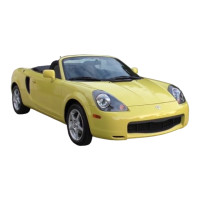
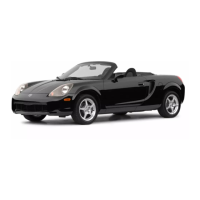


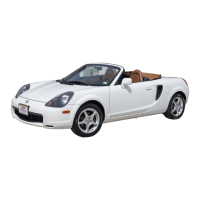
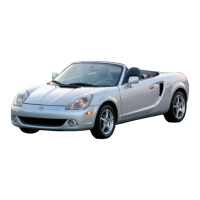
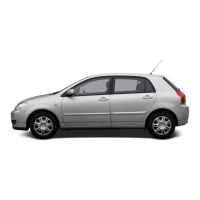
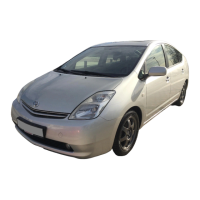

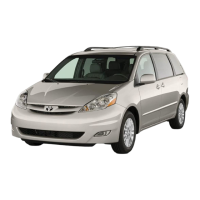


